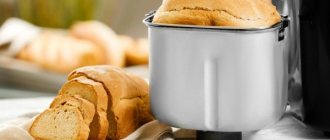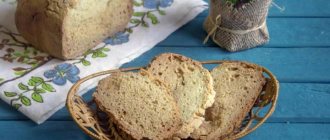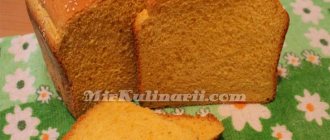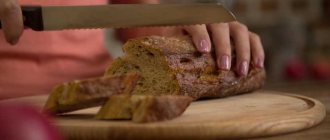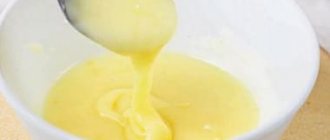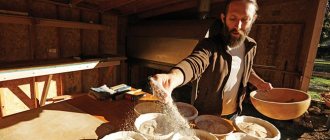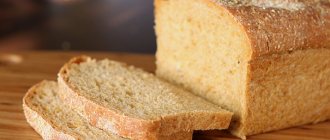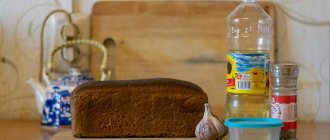Shoti (another name is shotis puri) is a type of traditional Georgian pastry. This type of bread is prepared from white flour, and its shape resembles a canoe.
The growing interest in Georgian cuisine is not accidental, because Georgia is famous for its picturesque mountains and clean air, and its residents are known for their optimism, excellent health and longevity.
What is puri
In Georgian, “puri” means bread. You may ask: then what is “shoti”? This is the name of a particularly popular type of bread in Georgia – shotis puri. So popular that there is a slight confusion of names: the literal translation of the Georgian შოთის პური (“shotis puri”) would sound like “bread bread”.
Shotis puri must be distinguished from lavash, with which it is sometimes confused. These two types of bread differ in their shape. Lavash should be flat, but shoti has a boat-like shape.
Shoti is a universal bread that can be served with any dish, but it is especially recommended along with kebab and ketchup.
What to serve shotispuri with
Bread in Georgian is called shotispuri, and it is an easy-to-prepare, but satisfying and tasty version of a flour product. It turns out with a crispy and golden brown crust, and inside there is a porous crumb.
It is highly recommended to combine shotispuri bread with shish kebab. It will also taste harmoniously with any Georgian meat dishes, including canakhi, satsivi, kharcho, etc. Georgian puri will simply go perfectly well, especially with pickled ones.
In Georgia, it is considered a real delicacy when Georgian puri bread is cut lengthwise and tender suluguni and a couple of sprigs of cilantro are placed inside. Just try it to see how delicious it is.
Interestingly, Georgian shotispuri bread is served with shish kebab. They make a large flatbread, place it on a dish, place the meat on top on skewers, or after removing it, and then “cover” it with another flatbread. This way the kebab stays hot longer, and the Georgian puri is soaked in meat juice and becomes even tastier.
Baking puri: traditions and history
Traditionally, bread is baked in a round clay oven called a tone (pronounced “tone”).
In Georgia, tone can be found on almost any street.
The shape of shotis puri is due to historical reasons. The fact is that bread of this shape is convenient to eat while hiking, because you can quickly and easily grab it with one hand. This quality was valuable for warriors who needed to fully concentrate on completing the combat mission. Agricultural researcher Nana Chkhutiashvili believes that this is why bread historically appeared in this shape. The researcher emphasized that such bread is easy to prepare, can be cooled quickly, and also remains soft for several days. All these qualities could well make it an excellent food for soldiers.
This bread is still valued today – now mainly for its special taste.
Interestingly, once upon a time all Georgian bakers were from Racha, a mountainous region in Georgia. Therefore, historically, bakers from this area enjoy special authority, and they still enjoy the reputation of the best bakers in Georgia, who bake bread very slowly and carefully.
Mchadi and Chvishtari
There is an opinion that corn flour slows down the aging process and that is why in Georgia you can find so many dishes made from the flour of this plant. These flatbreads with a crispy crust are especially good with spicy dishes: their bland taste neutralizes and highlights the spiciness of Georgian dishes. Mchadi with cheese is called chvishtari, which must be eaten hot, because inside there is a viscous cheese filling. For festive feasts, chopped meat with herbs and seasonings and stewed beans can be added inside the chvishtari.
Traditional cooking technology in tone
- A dough mixing machine can be used to prepare large quantities of shoti in tone. But the owners of small Georgian bakeries can proudly say that their dough is kneaded by hand. Kneading the dough by hand will take about 5 minutes. The dough is kneaded until it acquires a homogeneous and slightly liquid consistency.
- From the resulting dough, future Georgian boat-shaped buns are made. After this, the Georgian bread is lightly moistened with a water-salt solution.
- The blanks are placed in a Georgian tone oven, which must first be heated well. Baking temperature – 400 degrees. The bread should be placed on the walls of the tray; a press is used for this.
- At this temperature, Georgian shoti bread cooks very quickly: it only takes 5-6 minutes. The readiness of bread baked in the oven is determined as follows: if the Georgian buns have acquired a golden brown hue and are easily separated from the bread, then they are ready.
Homemade shoti recipe
Even if homemade bread, prepared far from Georgia, will not be traditional shotis puri in the full sense, but is this a reason to deny yourself the pleasure of trying to cook Georgian bread and treat it to your loved ones?!
Ingredients
To prepare Georgian buns we will need:
- warm water (0.3 liters);
- premium wheat flour (400 grams),
- 10 grams of salt,
- ½ teaspoon dry yeast.
Cooking method
A simple set of ingredients for preparing Georgian bread should be easily available at your nearest grocery store. But you can’t create a temperature of 400 degrees at home in the oven. But it doesn’t matter: let’s try to create as close a version as possible. In total, it will take about 3 hours to prepare Georgian buns at home.
- Add dry yeast to warm water. So that they have time to work, we leave them for 10 minutes.
- Add salt and wheat flour. Alternatively, you can dissolve the salt in a small amount of water and moisten the outside of the buns with it. But this must be done before baking Georgian bread, otherwise the salt will not have time to distribute evenly and the taste of the bread will be specific.
- Knead the dough. The dough should be added little by little; it should not be too stiff. You have obtained the dough of the desired consistency if it is soft and tender, but at the same time almost does not stick to your hands.
- Form the dough into a ball and place it in a bowl. Cover the bowl with a lid or film and place in a warm place to rise. This will take one and a half to two hours.
- When the dough has increased in volume several times, it must be carefully divided into 2 equal parts, being careful not to knead the dough. The divided dough should be allowed to stand for at least another 15 minutes.
- We form Georgian bread in the shape of boats from the prepared dough. To do this, first make the cakes elongated. After this, we make a rhombus from the workpiece, forgetting to leave a hole in the middle for the air to escape. After this, our future bread should sit for about 20 minutes. It is advisable to cover the formed Georgian buns with film or a towel so that they do not dry out. Meanwhile, preheat the oven to 250 degrees.
- Bake at a constant temperature until golden brown. Baking time – 10-15 minutes.
Although baking takes a little longer than in a Georgian oven, the bread still turns out very tasty. After baking, you need to remove it from the oven, wrapping it in a towel. Georgian bread can be served hot.
The history of Georgian bread is a tradition that is passed down through generations
It is still baked in the old folk way - in ovens called “tone”. Bread in Georgian is “puri”, so it turns out “tonis puri”, literally “bread from the oven”.
Tone in Georgia is on almost every street. The smell of freshly baked bread spreads along the street, filling all the nooks and crannies. Few people bring it home whole: it is simply impossible to resist pinch off the fragrant crispy crust along the way, because the most delicious bread is hot, straight from the oven.
Georgian bread weighs about 300-400 grams and costs, depending on the size, from 80 tetri to one lari (about 30 - 40 cents).
Secrets of tonis puri
The tone oven is like a stone well. It is dug into the ground and lined with clay bricks on the inside. The fire burns at the bottom, and the bread bakes on the walls.
Georgian bread baked in tone comes in different shapes - round, oblong, with rounded corners - “dedis puri” (mother’s bread), and shoti - diamond-shaped, with elongated ends.
© photo: Sputnik / Anna Yarovikova
Bakery of Georgian bread - tone
The shape of the Georgian shoti with pointed ends is a tribute to tradition, and the hole in the middle of the bread is a necessary technological attribute. Without it, the hot air inside the bread will expand and the whole bread will rise and turn into a big bubble.
Shoti, which consists of flour, water, salt and yeast, is kneaded to a thick dough, then a flat cake of the required shape is formed, which the baker molds to the walls of an oven heated to 300 degrees. It is at this temperature that the bread will not fall, but will be fried until golden brown. On average, it takes 10-15 minutes to bake crispy, aromatic bread.
In Georgian villages, stoves still operate on wood, but in the city they have long switched to gas burners. Villagers claim that their bread, with a slight aroma of smoke, tastes better than city bread. This is the same difference as with barbecue cooked in the city, on ready-made coals, and in nature, on a live fire.
Ancient traditions
In ancient times, Georgians stored “purisdeda” - soured dough from previous baking - in a special clay pot “kochobi”. “Purisdeda” was diluted in warm water and mixed with a small amount of flour, left for a day, after which the well-soured mass was added to the flour and thoroughly mixed with water and salt.
Hops yeast or beer were also used to prepare the dough.
Evgenia Shabaeva
Photo from the series “Peragon” (Georgia)
The dough was kneaded and matured in a special vessel - “warzli”. Then it was cut into pieces - “gunda”, laid out on an “oromi” board and covered with a towel. Meanwhile, the walls of the hot stove were sprinkled with salt water - this was called “feeding with salt.” This way the dough was better attached to the vertical wall of the oven, and the surface of the freshly baked golden steaming bread became saltier and tastier.
Traditionally, round bread was baked first, and then, an oblong shotispuri was placed in the already slightly cooled “tone”. After cooling, the bread was stored in wooden grain storage facilities - kidobani.
As a rule, bread was baked once a week; during baking, a small family feast was held with cold wine, fresh cheese, pickles and hot, crusty bread.
Warriors Bread
The “Shoti” shape, a sickle-shaped Georgian bread, was baked in the Kakheti region, the technology, recipe and shape of the bread have been preserved there to this day. The special features of Shotis puri are that it is easy to bake and cools quickly.
According to Nana Chkhutiashvili, a specialist at the Center for Scientific Research of the Ministry of Agriculture of Georgia, the shape of “shotis puri” did not appear by chance - it was convenient to take it on military campaigns.
© photo: Sputnik / Rukhyan
Baking Georgian bread shotis puri in a clay oven
“Shoti bread bakes easily, cools quickly and remains soft for several days. During enemy attacks on Kakheti in the 17th century, it was most likely convenient for Georgian warriors to take bread of this particular shape with them,” says Chkhutiashvili.
And for the mountainous regions of Georgia, the shape of the loaf was typical. In the mountains there were special ovens in which Georgian loaves were baked; this tradition was preserved until the 20th century.
Secrets and nuances of cooking
- It is necessary to make a hole in the shotis puri so that air can escape from it during the baking process. Otherwise, the bread will puff up too much and lose its normal shape.
- If you use a tone oven for baking, you must use special spatulas for planting, otherwise you may get a serious burn.
- A baker who has never used a Georgian oven before will need special training. In order to correctly place Georgian bread in the tone and at the same time not drop the buns into the fire, you need masterful dexterity.
The effect of shoti on health
From a medical point of view, the Georgian diet and lifestyle in general is one big paradox. Traditional Georgian cuisine seems to specifically challenge scientific ideas about healthy eating and does not fit into the framework of popular diets.
Cholesterol-rich meat products, spicy seasonings, frying foods, and to top it all off, there is always alcohol on the table. With such approaches to nutrition, science predicts inevitable and immediate problems with the cardiovascular system. But Georgians continue to set records for the number of centenarians.
It is curious that a number of nutritionists believe that the body is better adapted to “its” type of nutrition, that is, for example, Georgians tolerate the same spicy food better, because their body gets used to such food from childhood. But switching to the cuisine of another nation that is alien to the body is not only unusual, but can also lead to the development and exacerbation of various diseases.
For example, one of the most harmless consequences of eating spicy food by a person for whom it is unusual will be constipation. It’s worse when a person changes his eating habits and switches to systematically eating spicy food. Over time, this can lead to the development of colitis and even increases the risk of developing stomach cancer.
Therefore, with traditional Georgian cuisine, spicy seasonings for shoti bread must be used in moderation. But even if you don’t abuse spicy seasonings, don’t rush to rejoice, scientists warn. Recently, there is growing evidence of the benefits of the Mediterranean diet. Although the Mediterranean Sea, it would seem, is not so far from the Black Sea adjacent to Georgia, the nutritional principles in the Mediterranean diet are completely different.
As CNN emphasizes, if you want to adhere to the principles of the Mediterranean diet, say “goodbye” to white refined flour and fats other than olive oil. But shotis puri is, in its composition, also ordinary wheat white bread.
However, every rule has exceptions: sometimes white flour products also appear on the tables of residents of the Mediterranean region. For example, Italians cannot live without pizza. Just like pizza, shoti bread is best suited not for inclusion in the everyday diet, but as an unusual dish, which, when prepared, will make you appear in a favorable light as a true connoisseur of national dishes of the world.
Shoti option with whole grain flour added
In this version of the recipe, Georgian shoti bread will be healthier due to the introduction of a small amount of whole grain flour into the recipe. Also, the basic recipe has too much salt, but this version has reduced the amount.
You will need the following products:
- 350 grams of premium wheat flour,
- 50 grams of whole grain wheat flour,
- mineral water – 1 large glass (0.3 liters),
- dry yeast - 1 teaspoon,
- salt – 5-7 grams,
- 1 teaspoon sugar,
- six percent apple cider vinegar - ½ teaspoon.
The procedure for preparing and shaping the buns is similar to the basic recipe. We bake in a similar way, but there is a twist. Because whole wheat flour is coarser, when the bread is halfway done (about 8 minutes after it goes in the oven), you should remove it and lightly spray it with water. After this, the bread is immediately returned to the oven and baked until golden brown.
What is shoti
Shoti is the national bread of the Georgian people, which is boat-shaped and always has a hole in the middle. For some reason, most people mistakenly believe that shoti is lavash. In fact, these are completely two different dishes, while the pita bread is flat and wide.
Trying Georgian shoti bread means experiencing the entire culinary culture of Georgia. The bread is hearty, with a pleasant salty taste, clean, tender and airy. Shoti will perfectly complement both hot dishes and juicy kebab.
It is better to eat shoti as soon as it is served to the table - hot and aromatic. After lying for a while, the bread will simply lose all its beneficial properties. But storing it for three days is still not prohibited.
Of particular interest, in addition to taste, is the shape of the shoti. The boat shape is a tribute to a tradition that dates back far into the past. And there must be a hole in the middle of the bread. If this is not done, the hot air will expand the baked goods inside, and it will turn it into a bubble.
